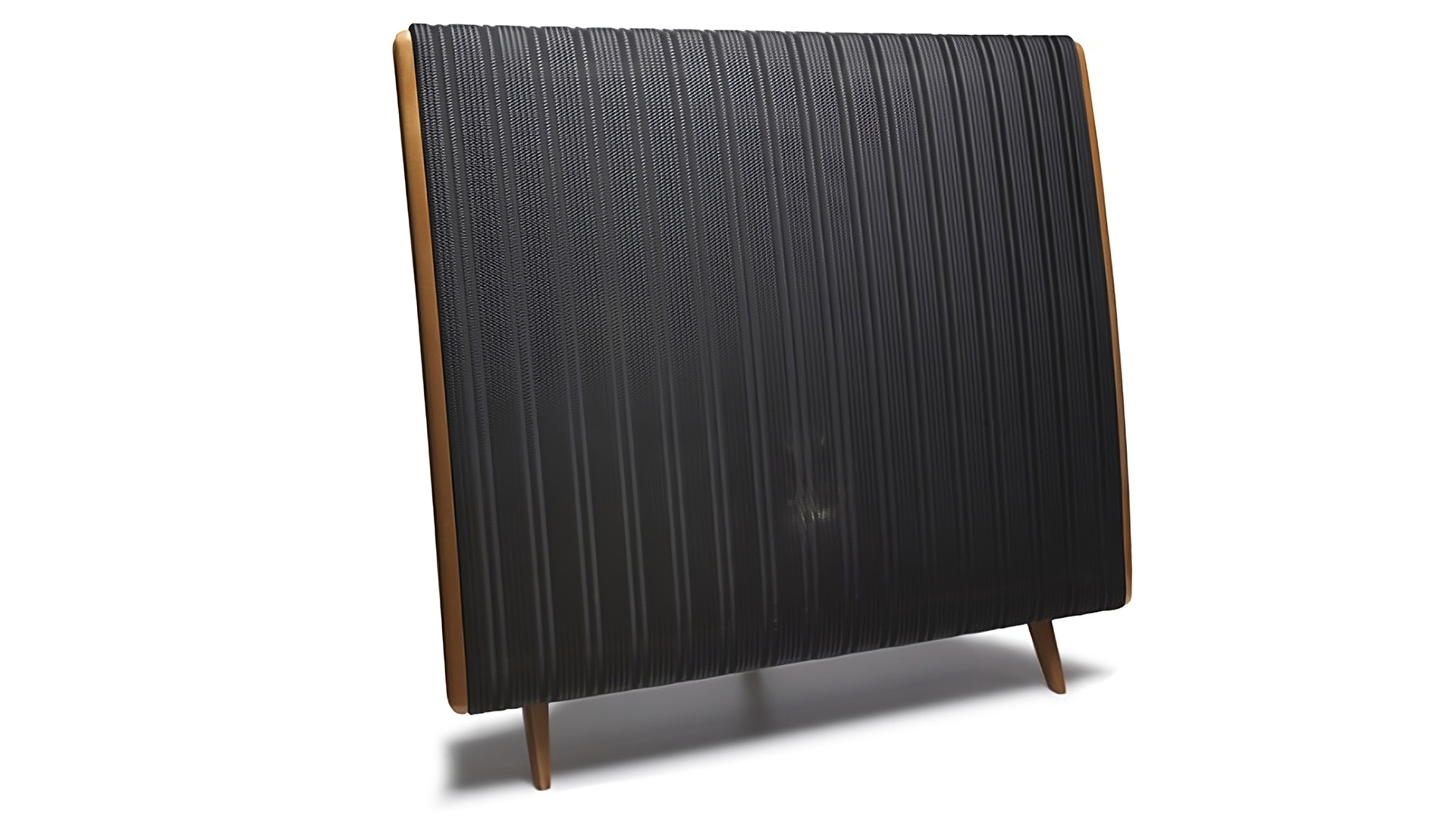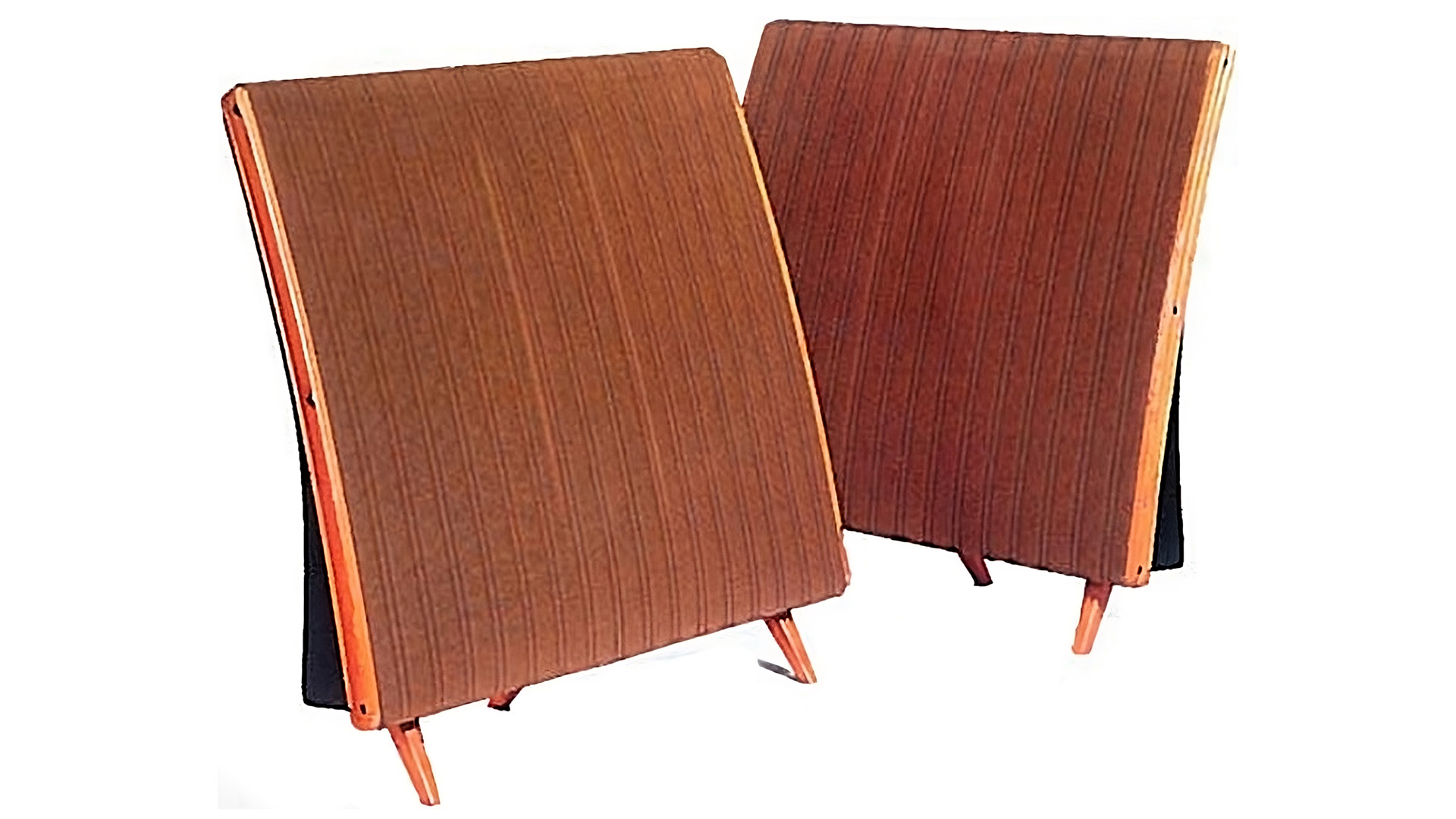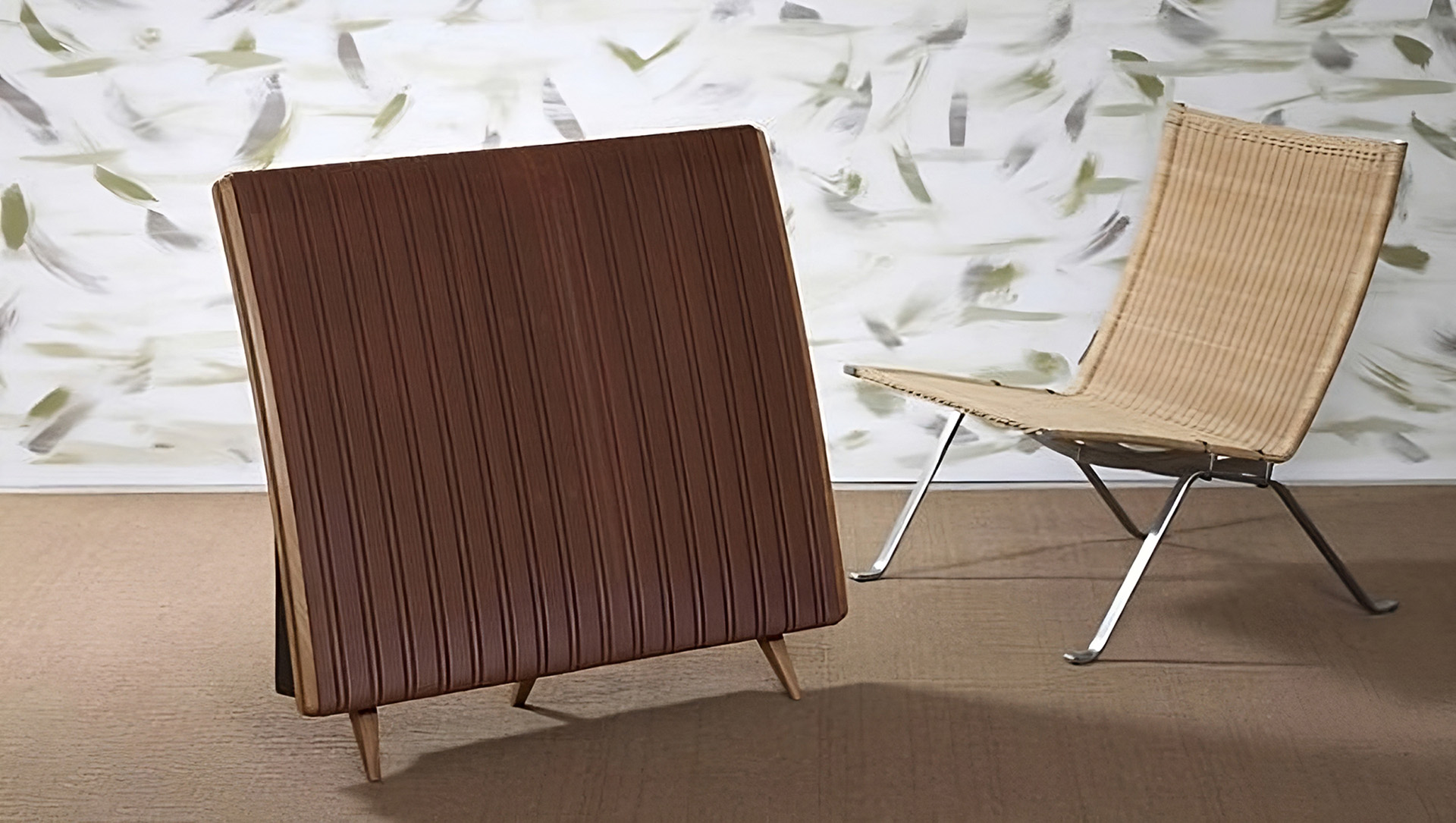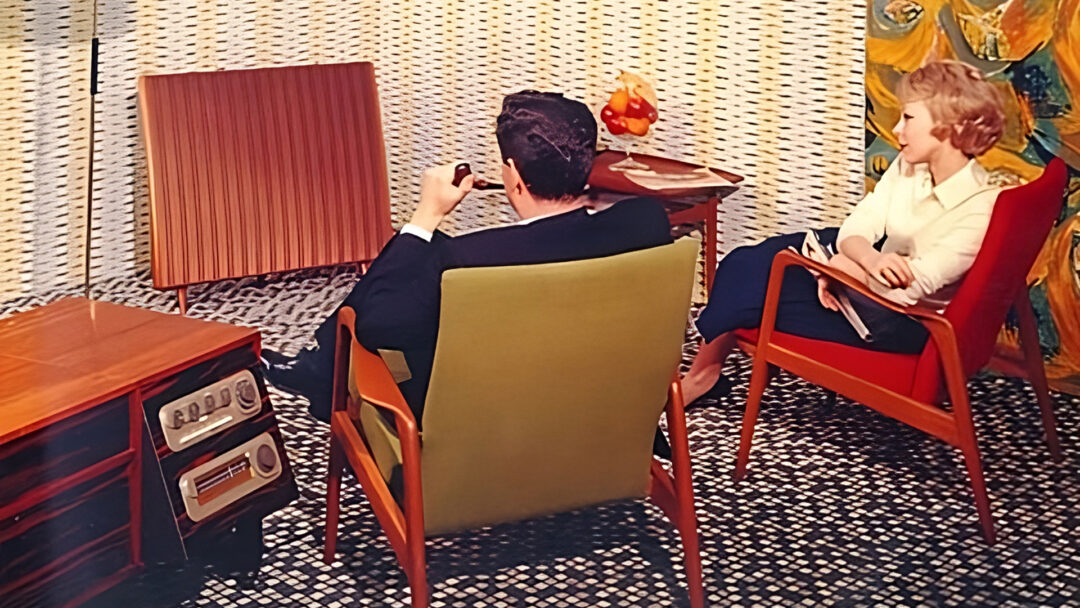England is famous for being a speaker country, and one of the most famous and recognisable English speakers is the Quad ESL-57. With its flat, slightly curved shape and a top plate covered by a metal grille, it most closely resembles a free-standing electric heater.
The unusual appearance, unlike anything the hi-fi world had seen in 1957, was due to a working principle that was nothing short of revolutionary. The letters ESL stood for “Electrostatic Loudspeaker,” and the Quad ESL was the world’s first full-range loudspeaker based on this principle.

In a conventional dynamic speaker, sound is created by a voice coil moving in a magnetic field driving a cone. An electrostatic speaker contains none of these parts. Here, the sound is created by a large, micrometre-thin diaphragm stretched between two metal grids, each with its own electrical charge. When the signal (after being transformed up to high voltage level) is applied to the electrically conductive diaphragm, it moves between the grilles and produces sound. Because the diaphragm is extremely light, electrostatic speakers can react very quickly and achieve excellent transient response.
The Dahlquist DQ-10 was groundbreaking in every way when it was launched in 1972. Many of the ideas were a decade ahead of the competition.
At its launch in 1957, the Quad ESL had a price tag of £52. This was, of course, the unit price, as stereo music listening only became common in the latter half of the 1960s.
Not for loud music
Quad itself labelled the ESL-57 as a speaker “for serious listening” – which translates to classical music. Of course, you can play all genres of music on the electrostats, but they are best suited to moderate sound pressure levels and not overly large listening rooms. The room size can be particularly challenging, as the speakers measure 88 cm in width and should preferably be placed some distance from the back wall to balance the sound radiation from the front and back. The Quad ESL-57 is a dipole speaker without an enclosure.
Challenging for the amplifier
The Quad ESL-57 is no easy task for an amplifier. Firstly, it is woefully inefficient: the speaker has a sensitivity of 83 dB at 2.83 volts. Impedance fluctuates between 150 ohms at the lowest frequencies and 1.8 ohms at 20 kHz. And to add insult to injury, the load is predominantly capacitive. The entire speaker is effectively one big capacitor. This load put many of the early transistor amplifiers of the time on the ropes – or in the workshop.
Quad’s own amplifiers, models 33 and 405, were naturally designed to handle the load, but required a set of voltage-limiting resistors to ensure that the output voltage from the amplifier never exceeded 33 volts, which was the maximum load for the ESL-57. A higher voltage caused a destructive spark to jump between the diaphragm and the metal grid.
Musical
The many limitations may sound daunting, but once you’ve found an amplifier that’s up to the task, got the big speakers in place in the living room – and also come to terms with the fact that the total sound pressure never will exceed approx. 95 dB – you’ll be rewarded with such a musical and open reproduction that it makes the above seem like a minor matter. Like most electrostats, the Quad ESL-57 is lightning fast. The bass reproduction is not abysmally deep due to the open principle, and the treble rolls off at 18 kHz. But the midrange reproduction is so colourless and resonance-free that the world’s oldest electrostatic speaker can still compete after 66 years.

Lethal!
The Quad ESL-57 is not a speaker for home tinkering. The thin mylar foil membrane is suspended in an electric field with a 10,000 volt difference between the metal grilles. Removing the outer protective grilles is therefore an acute danger to life! Which doesn’t stop the most fanatical audiophiles from doing just that – to reduce the possibility of resonances.
Successor after 26 years
The Quad ESL 57 was the world’s first full-range electrostatic speaker, and for many years it was simply called the Quad Electrostatic Loudspeaker. The number “57” was added in 1981 when the successor was launched. With quirky British logic, this was named ESL-63, as 1963 was the year its development began.
Still available for purchase!
Quad tried to stop production of the original ESL speaker in 1985, but as demand persisted, production was resumed and ran until 1995 in Huntingdon, England. Here the machinery was resold to Quad’s German distributor, Quad Musikwiedergabe, who still build and sell the ESL-57 speaker. The price has risen somewhat since its introduction, and a brand new(!) set of Quad ESL-57s today costs EUR 5,690.

Should I buy a set?
If you’re tempted to experience the classic in your own living room, there’s a great opportunity to make that dream a reality. Firstly, as mentioned, the Quad ESL-57 is still in production. And second-hand sets regularly pop up for sale. The price depends on the condition, but expect to pay just under €1000 for a working set in good condition. If you have the courage to refurbish the speakers yourself – and aren’t afraid of messing with high voltage – you may be lucky enough to find them cheaper.


Sweet Home Review .
I have my ESL 57’S, partnered with fully refurbished quad 11 mono blocks. Which as many people know is what they were designed around. The preamplifier is a Densen Dm20, very musical and dynamic . Linked to this is a Roksan K3 dac for the digital side of things. For the analogue side, a Mark Travis mm valve phono stage, and a heavily modified 1986 Rega planer 3. It all blends into quite a nice set up.
. Linked to this is a Roksan K3 dac for the digital side of things. For the analogue side, a Mark Travis mm valve phono stage, and a heavily modified 1986 Rega planer 3. It all blends into quite a nice set up.